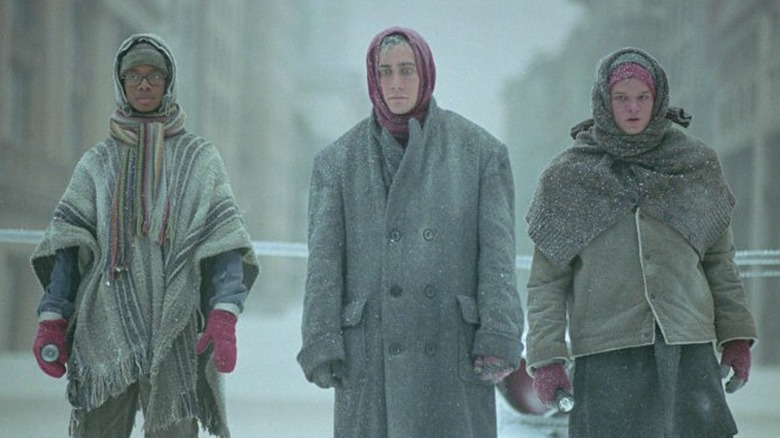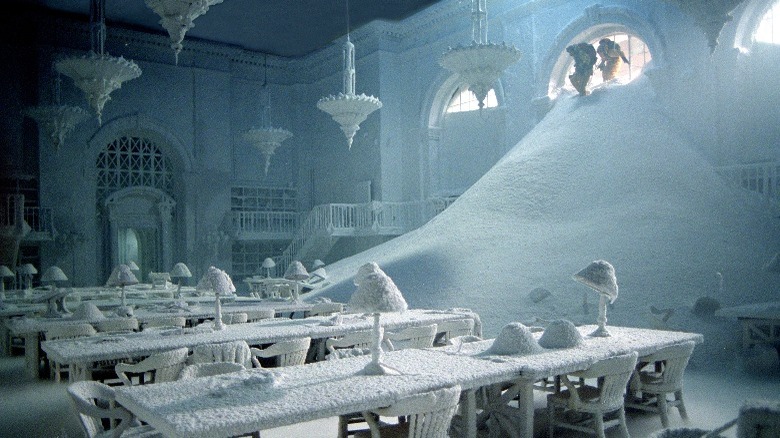The Day After Tomorrow Had To Find A Way To Turn Weather Into A 'Monster'
Love him or hate him, no one can deny that Roland Emmerich is a connoisseur of the disaster movie. The German-born filmmaker has destroyed major cities around the world with volcanoes, floods, aliens, giant monsters, and, most recently, the Moon. Out of all of his on-screen global destructions, the deep freeze of "The Day After Tomorrow" might be his most iconic, if only for the sheer audacity of Emmerich's approach to climate change. The director knows that a satisfying disaster film doesn't need to adhere to the laws of physics or environmental science as long as his audience gets a theatrical experience, and the literal killer cold front of his new Ice Age blockbuster is the prime example of that.
Emmerich has been obsessed with global disasters ever since the student film he made in 1984 while attending the University of Television and Film Munich. Entitled "The Noah's Ark Principle," the film is about a space station that can control the earth's weather and the ensuing political drama (a plot that sounds similar to "Geostorm," directed in 2017 by Emmerich's writing and producing partner Dean Devlin). Unbound by film school budgets after the smash success of "Independence Day" in 1996, "The Day After Tomorrow" is Emmerich finally realizing his dream of destroying the Earth through weather-related special effects.
Hoar frost horror
"The Day After Tomorrow" features no shortage of gigantic, end-of-the-world disaster setpieces that adhere more to the reign of the spectacle rather than the rules of science. There's one scene in particular that stands out as particularly ludicrous, in which a group of survivors run away from a literal wave of freezing ice as if the cold is literally Jason Vorhees. They even close the doors behind to try to escape! This was absolutely intentional on the part of Emmerich, as co-screenwriter Jeffrey Nachmanoff told SYFY:
"Early on, Roland very smartly said, 'Jeffrey, we have to sort of personify or make manifest the danger as if it were a monster. We don't have an asteroid, we don't have aliens, so it has to be something that feels like that.' And even the way he shot it, sometimes the camera's chasing [the characters] down those corridors ... it feels like a monster pursuing you."
According to Nachmanoff, a scientist at the National Oceanic and Atmospheric Administration (NOAA) claimed that there was a bit of scientific basis for the idea. Despite their heat, the release of sulfur dioxide from volcano eruptions cools the atmosphere by blocking solar beams. If that "particulate interference escaped the notice of the [NOAA radiometer] sensors because it happened at some special elevation," the resulting "column of cold air ... would freeze everything in its path." Of course, there are no volcanoes in "The Day After Tomorrow" and it's doubtful that the cold could stalk hallways, but Emmerich knows how to take scientific liberties for the sake of entertainment, to say the least. Who says the apocalypse can't be fun?

